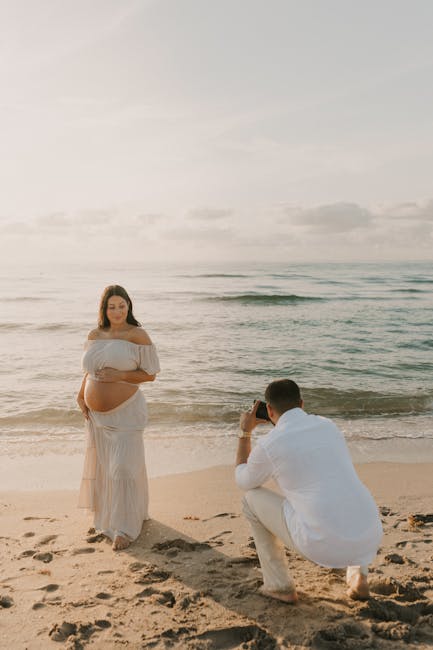Herb Ritts: The Iconic Fashion Photographer Who Defined a Generation
The Enduring Legacy of Herb Ritts
Herb Ritts, a name synonymous with iconic fashion photography, left an indelible mark on the industry. His work, characterized by its stark beauty, dramatic lighting, and often minimalist settings, defined a particular aesthetic that continues to influence photographers today. More than just capturing images, Ritts created narratives, crafting a visual language that spoke to the cultural zeitgeist of his time and continues to resonate with audiences decades later.

Early Life and Influences
Born in Los Angeles in 1952, Ritts’ journey into photography wasn’t a linear one. He initially pursued a career in medicine, but a latent artistic inclination eventually led him towards photography. His early work, often shot on location using natural light, showcased a burgeoning talent for capturing the essence of his subjects. These early experiments provided a solid foundation for the sophisticated, polished style he would become known for.

Influences varied, from the stark realism of Diane Arbus to the dramatic lighting techniques of Hollywood photographers. However, Ritts’ vision was distinctly his own, characterized by a unique combination of high-fashion glamour and an almost anthropological observation of his subjects. He wasn’t just documenting clothing; he was capturing personalities, attitudes, and the spirit of a generation.
The Rise to Fame: Defining the 80s and Beyond
The 1980s marked Ritts’ ascent to international acclaim. His work graced the covers of major fashion magazines like Vogue, Harper’s Bazaar, and Vanity Fair, consistently pushing the boundaries of fashion photography. He collaborated with prominent designers, celebrities, and models, crafting striking images that transcended the purely commercial. His photographs were not simply advertisements; they were works of art, often imbued with a sense of narrative and emotional depth.
Ritts’ signature style became instantly recognizable: clean lines, stark contrasts, and a powerful use of light and shadow. He often employed minimalist backgrounds, allowing the subject and their clothing to take center stage. This technique, while seemingly simple, required a masterful understanding of lighting and composition. The resulting images were both elegant and powerful, possessing a timeless quality that endures to this day.
Celebrity Portraits: More Than Just Snapshots
Beyond fashion, Ritts established himself as a leading celebrity portrait photographer. He captured iconic images of some of the biggest names in Hollywood and beyond. These portraits, while showcasing the glamour and allure of their subjects, went deeper, revealing something of the inner personality and charisma of each individual. His portraits weren’t just flattering; they were insightful, capturing moments of vulnerability, power, and quiet contemplation.
The level of intimacy achieved in his celebrity portraits was remarkable. He developed strong relationships with his subjects, fostering a level of trust that allowed him to capture genuine emotion, transcending the artifice often associated with celebrity photography. His images of Richard Gere, Jack Nicholson, and Madonna are just a few examples of his ability to capture the essence of his subject’s persona.
The Influence of Hollywood and Art
Ritts’ background in Los Angeles played a significant role in shaping his aesthetic. The city’s cinematic landscape, the pervasive presence of Hollywood glamour, and the vibrant cultural mix influenced his imagery. He cleverly blended the allure of Hollywood with a sophisticated, artistic approach, creating images that were both glamorous and strikingly modern.
His work demonstrated a keen understanding of artistic principles, blending classical aesthetics with contemporary sensibilities. The influence of Hollywood’s visual language is palpable in his use of dramatic lighting and composition, but he infused it with an artistic sensibility that was distinctly his own, separating him from mere commercial work. His photographs are often described as possessing a painterly quality, demonstrating a profound understanding of visual storytelling.
Technical Mastery and Artistic Vision
Ritts’ mastery of technical aspects of photography was paramount to his success. His understanding of lighting, composition, and film processing was exceptional, allowing him to achieve the precise results he envisioned. However, his technical skills were always in service to his artistic vision, never overshadowing the creative intent behind his work.
He possessed an uncanny ability to identify the essence of his subjects, translating that essence into a visually stunning image. He could effortlessly capture both the physical beauty and the inner spirit of his models and celebrities, crafting photographs that transcended the purely superficial.
Beyond the Lens: Exhibitions and Legacy
Ritts’ work wasn’t confined to the pages of magazines. He held numerous exhibitions throughout his career, showcasing his work in prestigious galleries and museums around the world. These exhibitions provided a more comprehensive view of his oeuvre, highlighting not just his commercial work but also his more personal and experimental pieces.
His impact on fashion photography is undeniable. He helped define the aesthetic of a generation, shaping the visual language of the industry for years to come. His influence can be seen in the work of countless contemporary photographers, demonstrating the enduring power and originality of his vision.

The Enduring Appeal of His Work
The enduring appeal of Herb Ritts’ photography lies in its ability to transcend time and trends. While his work is distinctly a product of its era, it possesses a timeless quality that resonates with contemporary audiences. His ability to capture both the physical beauty and the emotional depth of his subjects creates images that remain powerful and evocative decades later.
His use of light and shadow, his minimalist compositions, and his keen understanding of human emotion all contribute to the enduring appeal of his work. These photographs aren’t just snapshots of a moment in time; they are enduring portraits of a generation, reflecting its aspirations, its anxieties, and its undeniable charisma.
Analyzing his Iconic Shots: Case Studies
Let’s analyze some of Ritts’ most iconic shots to better understand his techniques and artistic vision. For example, his images featuring supermodel Cindy Crawford, often shot in stark, desert landscapes, perfectly exemplify his ability to fuse the glamour of high fashion with the raw beauty of the natural world. The contrast between Crawford’s elegance and the harshness of the environment creates a powerful visual tension that captivates the viewer.
Similarly, his portraits of celebrities often reveal a surprising depth of emotion. He could capture a vulnerability in his subjects that was rarely seen in other celebrity photography, revealing a level of intimacy that added another layer of complexity to his work. His ability to capture both the glamour and the humanity of his subjects is a testament to his exceptional skill and sensitivity.
Conclusion: A Master of Light and Shadow
Herb Ritts was more than a fashion photographer; he was a visionary artist who used the camera to shape cultural narratives. His masterful use of light and shadow, his minimalist aesthetic, and his insightful portraits continue to inspire and influence photographers today. His legacy is one of unparalleled talent, creative vision, and a unique ability to capture the essence of a generation. He remains a pivotal figure in the history of fashion photography, and his influence on the industry will continue to be felt for decades to come.




